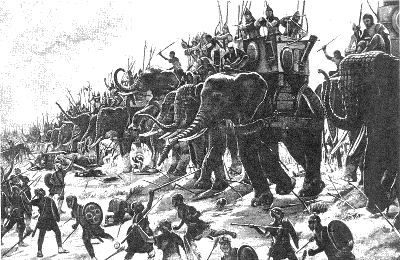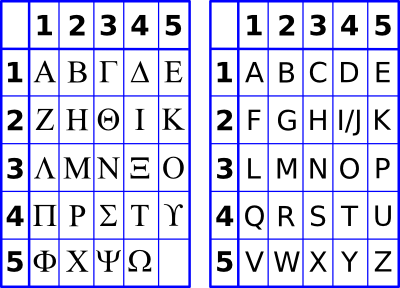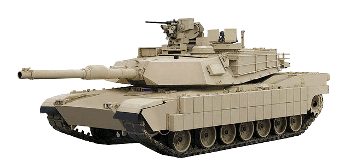War Elephant DNA
February 7, 2014
The traditional
elementary school paradigm is "
reading, writing, and 'rithmetic," but the study of
history has somehow entered the mix, along with
science. There's a reason to study history. As
explained by
philosopher,
George Santayana (1863-1952), in
The Life of Reason, "Those who cannot remember the past are condemned to repeat it."
The study of history can also be entertaining. In a world presently overrun with Jaydens and Aidens,[1] where else can you encounter such interesting names as
Hasdrubal the Fair. Hasdrubal the Fair was the brother-in-law of
Hannibal, the formidable opponent to the
Roman Republic in the
Second Punic War. Most wars have their
slogans, and the Roman slogan for this war was "
Carthago delenda est;" that is, "
Carthage must be destroyed."
Hannibal is most famous for marching his army through the
Pyrenees and the
Alps from
Iberia into
Northern Italy in 218
BC. Army marches, even through snow-covered mountains, are not that interesting, but Hannibal's march is noted for its contingent of
war elephants. Hannibal was able to occupy a portion of Italy for fifteen years, but he was defeated by
Scipio Africanus at the
Battle of Zama.

Carthaginian war elephants attack the Roman infantry at the Battle of Zama, 202 BC.
(Illustration, circa 1890, by Henri-Paul Motte (1846-1922), via Wikimedia Commons.)
Hannibal's use of elephants might be the most famous, but the use of elephants in warfare had a long history before that time. Nearly coincident with Hannibal's march into Italy, there was a battle for control of parts of the
empire left behind by the death of
Alexander the Great in 217 BC. A recent study suggests that Alexander may have been
poisoned.[2]
This battle, between
Ptolemy IV of
Egypt and
Antiochus III the Great of the
Seleucid Empire, is called the
Battle of Raphia. It's of
scientific, as well as historical, interest, since it was the only known battle between
African elephants and
Asian elephants.
The adversarial forces, as reported seventy years after the battle by the
Greek historian,
Polybius, consisted of 73 African war elephants in Ptolemy's ranks, versus 102 Asian war elephants in the army of Antiochus. Polybius is known also for a
cipher called the
Polybius square (see figure). In this simple cipher, each
alphabet character is replaced by the
two digit number that encodes its row and column in the square; e.g., "L" = 31.

Tables for the Polybius square cipher.
Greek has 24 characters compared with 26 for English. For English, I and J are combined.
(Illustration by the author using Inkscape.)
Antiochus had more war elephants, and because of these, Antiochus had a good showing at first. This was not merely because of the greater size of his war elephant contingent, but a consequence of his using Asian elephants, as Polybius describes in Book 5, chapter 84, of his Histories.[3]
"The way in which these animals fight is as follows. With their tusks firmly interlocked they shove with all their might, each trying to force the other to give ground, until the one who proves strongest pushes aside the other's trunk, and then, when he has once made him turn and has him in the flank, he gores him with his tusks as a bull does with his horns. Most of Ptolemy's elephants, however, declined the combat, as is the habit of African elephants; for unable to stand the smell and the trumpeting of the Indian elephants, and terrified, I suppose, also by their great size and strength, they at once turn tail and take to flight before they get near them. This is what happened on the present occasion; and when Ptolemy's elephants were thus thrown into confusion and driven back on their own lines, Ptolemy's guard gave way under the pressure of the animals."
Despite this, Ptolemy won the battle and gained control of the region around
Syria. Less than two
decades later, Egypt lost this same region to the Seleucid Empire. There's been considerable speculation why Ptolemy's elephants ran from the fight. The traditional explanation was that his African elephants were smaller than Ptolemy's Asian elephants. These African elephants might have been forest elephants (
Loxodonta cyclotis), not the larger savanna elephants (
Loxodonta africana);[4] or, a now
extinct smaller elephant species.
This issue was solved as part of a
genomic study of an
endangered population of
Eritrean elephants by
scientists from the
University of Illinois at Urbana–Champaign (Urbana, Illinois), the Ministry of Agriculture (
Asmara, Eritrea), the
National Cancer Institute, (Frederick, Maryland), the
University of Washington (Tacoma, Washington), and the Elephant Research Foundation (
Bloomfield Hills, Michigan). The research team was led by
Alfred Roca, a
professor of
Animal Sciences at the University of Illinois.[5-6]
The elephants are descendants from the original population used as war elephants by Ptolemy. The research study found that Eritrean elephants have
nuclear and
mitochondrial DNA (mtDNA) markers of savanna elephants.[5] There were no discovered links to forest or Asian elephants.[6] Since mitochondrial DNA is passed from mother to offspring, it would indicate whether any forest or Asian elephants had been in the Eritrean population at any time.[6] Says Roca,
"In some sense, mtDNA is the ideal marker because it not only tells you what's there now, but it's an indication of what had been there in the past because it doesn't really get replaced even when the species changes... The most convincing evidence is the lack of mtDNA from forest elephants in Eritrea."[6]
This research was supported by the
United States Fish and Wildlife Service.[6]

A modern war elephant.
An M1A2 tank, complete with trunk.
(Modified image from Wikimedia Commons.)
References:
- Top 10 Baby Names for 2012, US Social Security Administration Web Site.
- Matthew Backhouse, "Toxic wine led to Greek tragedy: NZ scientist," New Zealand Herald, January 11, 2014 .
- Polybius, "The Histories of Polybius," Book V, published in vol. 3 of the Loeb Classical Library (1922-1927). The text is in the public domain.
- William Gowers, "African Elephants and Ancient Authors," African Affairs, vol. 47, no. 188 (July, 1948), pp. 173-180.
- Adam L. Brandt, Yohannes Hagos, Yohannes Yacob, Victor A. David, Nicholas J. Georgiadis, Jeheskel Shoshani and Alfred L. Roca, "The Elephants of Gash-Barka, Eritrea: Nuclear and Mitochondrial Genetic Patterns," To Appear, J Heredity (2013) doi: 10.1093/jhered/est078. PDF file available, here.
- Claire Sturgeon, "War Elephant Myths Debunked by DNA," University of Illinois Press Release, January 9, 2014.
Permanent Link to this article
Linked Keywords: Elementary school; paradigm; the three Rs; reading, writing, and 'rithmetic; history; science; The Life of Reason; philosopher; George Santayana (1863-1952); Hasdrubal the Fair; Hannibal; Roman Republic; Second Punic War; slogan; Carthago delenda est; Carthage; Pyrenees; Alps; Iberian Peninsula; Iberia; Northern Italy; Anno Domini; BC; war elephant; Scipio Africanus; Battle of Zama; Carthaginian; Roman infantry; Henri-Paul Motte (1846-1922); Wikimedia Commons; Macedon Empire; Alexander the Great; poison; Ptolemy IV Philopator; Ptolemaic Kingdom; Egypt; Antiochus III the Great; Seleucid Empire; Battle of Raphia; science; scientific; African elephant; Asian elephant; Greece; Greek; historian; Polybius; cipher; Polybius square; letter; alphabet character; numerical digit; Greek language; English language; Inkscape; Syria; decade; Loxodonta cyclotis; Loxodonta africana; extinction; extinct; genome; genomic; endangered species; Eritrea; Eritrean; scientist; University of Illinois at Urbana–Champaign (Urbana, Illinois); Asmara, Eritrea; National Cancer Institute, (Frederick, Maryland); University of Washington (Tacoma, Washington); Bloomfield Hills, Michigan; Alfred Roca; professor; Animal Sciences; nuclear DNA; mitochondrial DNA; United States Fish and Wildlife Service; M1A2 tank; elephant trunk.